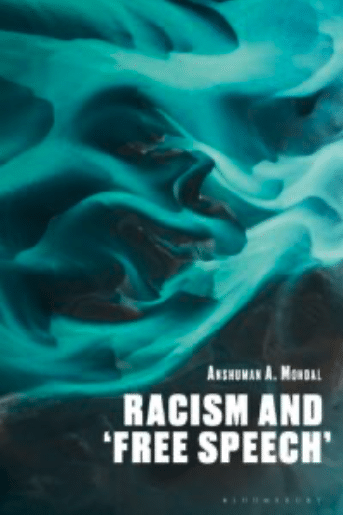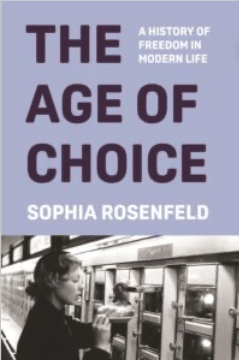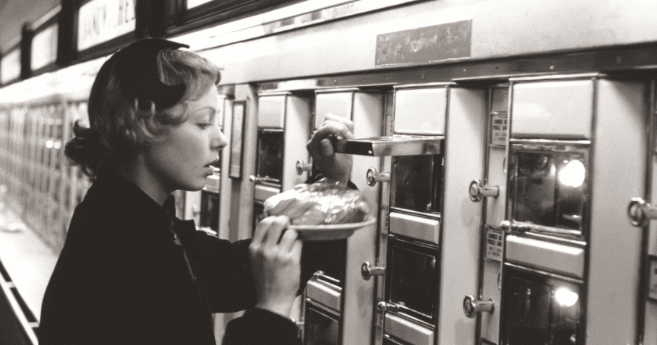
Anshuman A Mondal
Racism and ‘Free Speech’
London, Bloomsbury Academic, 2025. 239 pp., £18.99 pb. ISBN 9781350470538
‘The Ethics of Belief,’ an 1877 essay by Cambridge mathematician and philosopher William K. Clifford, begins with the story of a fictional shipowner whose seagoing vessel, he himself acknowledges, might not be as sound as should be. However, as putting his ship aright would cost more money than he wants to spend, the shipowner manages to convince himself that his boat is perfectly seaworthy for a transatlantic voyage. The shipowner sells tickets for the voyage and then quietly collects the insurance money when the vessel goes down in the middle of the ocean. Scandalous behaviour, indeed. But Clifford also asks his readers what should be our opinion of the shipowner had the vessel in question actually reached safe harbour. No different, he asserts, for he had still believed in the soundness of his vessel in the face of all available proof. And thus does Clifford lay out his famous principle:
It is wrong always, everywhere, and for anyone to believe anything on insufficient evidence.
If to believe on insufficient evidence is always wrong, what about speaking on insufficient evidence, or even contrary to all the evidence available, or even in the face of evidence about the harm that might be produced by the content of your speech? These are the questions that have bedevilled so-called ‘free speech’ purists of the progressive sort, who perhaps adhere to the truth of certain propositions (such as vaccines are beneficial to individuals and humankind, and the earth is round) but also believe that such a truth universally acknowledged among all scientifically literate people should not be the basis by which we measure someone’s right to speak and to disseminate propositions based upon insufficient evidence, or even just flat out lies. In fact, to be opposed to the active dissemination of lies or harmful rhetoric is to be labelled as being ‘against’ free speech. However, as Anshuman A. Mondal observes in Racism and ‘Free Speech’, the binary of being either ‘for’ or ‘against’ free speech obscures the fact that ‘free speech’ is, itself, ‘an ideological construct designed to obfuscate the political reality of social communication in order to uphold the legitimacy of certain social and political interests’ (xii). The embrace of ‘free speech’ as simply a neutral procedural framework, and thus a self-evident social good, makes left-liberal types enablers of rhetorics of social inequality. Racism is perhaps the social problem in which we invest the greatest potential for a curative in the maintenance of free speech, but this, Mondal asserts, relies upon a misunderstanding of racism as a psychological problem, with its source being ignorance or irrational hatred, rather than the result of political structures and practices that determine unequal outcomes for different groups.
To inquire how the popular conception of free speech ends up maintaining the viability of racism, Mondal interrogates the rhetorical foundation of liberal discourse. Starting with the likes of John Stuart Mill, he finds at the heart of liberal discourse a ‘dialectic of openness and closure’ in which liberty for the autonomous self is measured by a perpetual openness, including an openness to anything that might exist in the ‘marketplace of ideas.’ This imaginary marketplace, we are told, operates all the better the more there is for purchase, even if some of the ideas are outdated or fundamentally harmful—one must forever suspend final judgement. And here we arrive at paradoxes, for ‘if the whole mechanism of the marketplace relies on the power of persuasion, then the goal of persuasion is to convince someone that x is true and y is not; but that “someone” must also defer judgement indefinitely as to whether x is true and y is not, so the role of persuasion is undermined’ (36). Perpetual openness being one of the axioms of liberal ‘free speech’ theory means that any efforts at closure must be attacked as scandalous, which is why so-called ‘cancel culture’ has emerged as a bugbear for free speech purists, for ‘cancel culture’ threatens to remove items from the marketplace of ideas—as if items in our material marketplaces have never been pulled from the shelves for containing toxins, having been marketed fraudulently, or any number of other reasons ranging from the illegal to the aesthetically displeasing. Boycotts, as well as boycotts of those violating the boycott, have always been accepted political tactics—and perfect examples of ‘free speech.’ ‘To accept the characterization of “cancel culture” as a threat to “freedom,” then, is to accept a closure that obscures itself as an insistence that there should be no closures, articulated through the implication that there should be no consequences to the exercise of “speech,” and thereby to accept “speech” as an alibi for impunity,’ writes Mondal (75—76).

Sophia Rosenfeld
The Age of Choice: A History of Freedom in Modern Life
Princeton, Princeton University Press, 2025. 462 pp., $37.00 hb
ISBN 9780691164717
Moreover, claiming that the solution to ‘bad speech’ is merely more ‘good speech’ ignores the political or economic structures that privilege certain kinds of speech or certain groups above others. No marketplace is value-neutral, and just as with our own supermarkets, even a marketplace of ideas that contains a splendour of possibilities may yet demote or enhance the potential of certain products through strategic placement; something hard to find will not sell very well, no matter how tasty, healthy and affordable it be. The ‘more good speech’ argument also elides the nature of racism—again, treating it as a coherent ideology that can be debated rather than as a set of power relations. Mondal notes, ‘despite the total discreditation of the idea of “race” as a biological category by a modern genetics that finds in the human genome an alternative invisible “code” that demonstrates once and for all that the idea of “race” is a fiction, the liberal idea of vanquishing racism in the marketplace of ideas through reasoned argument has never come to pass’ (111). Not only do the managers who operate our marketplace of ideas continue to display racism prominently and promote its consumption for their own ends, but as the Swedish sociologist Mikael Klintman demonstrates in his 2019 book Knowledge Resistance: Why We Avoid Insight from Others, people often hold onto irrational ideas not because they themselves are fundamentally irrational individuals but, instead, because they belong to groups whose identities are predicated upon those same irrational ideas. Group identity can easily prove more precious than individual rationality and morality, and so true anti-racist and emancipatory work entails not showcasing rhetorics of equality in the marketplace but challenging the nature of the marketplace itself.
The idea of ‘free speech’ implies its opposite, ‘unfree’ speech, or censorship. Such a framing, Mondal notes, ‘obscures the ways in which “speech” as social discourse is always regulated. […] That is, the regulation of (social) discourse is its very condition of possibility, and the obscuring of this by the notion of speech as either free or not leads us to ask the wrong questions.’ Instead, ‘we should begin by acknowledging that we all live and communicate within expressive regimes’ (162). In other words, the market is not a neutral arbiter of people’s rationally determined selections but was established in such a way as to shape people’s preferences actively. Simply offering a wider selection will not produce liberty for a wider array of people: ‘Justice for the oppressed cannot be achieved without trespassing on the liberties of the oppressors,’ which will entail ‘not only the redistribution of resources, but also the redistribution of power, which in turn will effect a redistribution of “freedom”’ (169). Those inclined forever to dread the advent of some dictatorship of political correctness, of cancel culture run amok, are often the same who seek to evade responsibility for their own words under the banner of ‘free speech’. But as Mondal notes, ‘[i]t is “speech” that is free in “free speech,” not the speaker, which is ironic given that sovereignty of the individual is central to liberalism, to the idea of “free speech”’ (181). Freedom is not simply the absence of tyranny but instead constitutes ‘a complex and subtle web of relations, subject to pressures and forces that not only provide the context for discursive expression as a lived practice, but its content as well’ (191—192).
We overlook the fact that freedom emerges from our relations with other human beings when we imagine freedom as measured by the availability of choices before us. ‘Although we rarely make up the rules of the game or craft the banquet of possibilities, we are engaged in the business of self-realization as distinctive and independent people,’ writes Sophia Rosenfeld in The Age of Choice: A History of Freedom in Modern Life. ‘Both having choices and making choices are largely what count these days as being, indeed feeling, free’ (2). In fact, our modern conception of human rights, as with debates about free speech, is predicated upon a preference for individualized, choice-based rights, so that we prize the ability to practice a religion ‘of one’s choice’ and defend access to abortion with the slogan ‘My body, my choice.’ But the availability of choice hides what makes itself possible: ‘What needs recognition is that, paradoxically, freedom of choice has always required, and still requires, rules, regulations, even restrictions of multiple kinds in order to prevent it from threatening individual wellbeing or the stability of the social order as a whole’ (12). This is the history that Rosenfeld seeks to uncover, drawing from a wealth of cultural products—menus, dance cards, paintings and cartoons, novels, catalogues, advertisements and product surveys—to explore what developments have facilitated choice-making becoming the means by which we define ourselves and contextualize our collective humanity.
Rosenfeld’s story begins in the marketplace—specifically, the mid-eighteenth-century London auctions arranged by Christopher Cock, whose use of spectacle and printed catalogues kickstarted the practice of ‘shopping’ as we now know it. New fabrics from India accelerated the rate of change in what was considered fashionable, while ‘eighteenth-century retailers became stage managers and promoters of their goods in ways that proprietors of traditional market stalls had never been’ (46). Shopping soon becomes one realm in which women of a certain class can exercise the power of choice and thus becomes, in the English novelistic tradition, a trope expressing some female self-determination. Meanwhile, the Protestant Reformation ‘ended up producing as one of its accidental, long-term aftershocks a new form of religious diversity and then a new emphasis on deliberate, personal selection from among the options available,’ as well as a soteriology, among some branches, whose central tenet was that salvation depended upon a personal choice of Jesus as one’s Lord and Saviour (88). A new regime of religious freedom and culture of religious pluralism helped to ensure that no one church could counterbalance the power of the state, but the separation of church and state means that religious organizations needed to persuade people to join, and ‘as a result, personal identity, or conception of one’s place in the world, increasingly became a matter of chosen commitments’ (110—111). Alongside these developments, marriage came to be the subject of choice, a contract between individuals rather than families, its goal eventually redefined as the personal happiness of the partners involved.
However, it is voting by private ballot that ‘should be seen as a critical element of the growing standardization of rule-bound practices of choice, or bounded freedom, that liberalism ultimately imposed between the last quarter of the nineteenth century and the middle of the twentieth century on much of the world’ (196). Politics, like fashion, thus became a matter of personal expression for the individual voter, and later campaigns by women and minorities to secure the franchise for themselves established the practice of choosing ‘not just as the way to realize one’s ideals and aims but also what gives one standing as a full, autonomous adult in the first place’ (259). The growing industry of marketing, coming out of the field of psychology, built upon this, promoting the notion that true autonomy and identity was fashioned through the consumption of specific commodities, independent of broader community context—thus the atomized homo economicus. Free speech purists, Mondal noted, regarded equality as synonymous with the equal opportunity to produce speech, and as Rosenfeld observes, American think tanks of the post-World War II period increasingly recast equality ‘as the equal opportunity to make choices and freedom as the possibility of doing so’ (319).
However, there are limits to the freedom that can be afforded to oppressed peoples through the rhetoric of choice, for, ‘in practice, some people gaining in independent choices has as often worked to limit them for others as to expand them across the board, as in when, say, one person’s decision to corner the market on a commodity like radio stations or to buy something dangerous like a gun ends up restricting the options available to others’ (261). In the United States under Donald Trump, public goods and assets are being dismantled in order to subject yet more people to the cruel whims of a market ‘choice’ they have never desired. Moreover, the feminist framing of abortion as a personal choice not only failed to counter centuries of rhetoric depicting women as poor choosers (the eternal coquette) but also ‘denied the way most women’s lives were embedded in families and communities and existing systems of custom and belief that typically constrained their choices considerably further in practice’ (353).
More choices, just like more speech, is not the path to freedom but may only replicate existing inequalities—especially in these days of algorithmically tailored choices and online platforms where speaking itself is far from the main hurdle to being heard. Human existence is simply too precious to subject to marketplace rhetorics. Clifford’s narrative of the shipowner from ‘The Ethics of Belief’ is not simply a lesson on epistemology—it is also a lesson on just how predatory a marketplace unmediated by community can be for choice makers, whose unfortunate demise, in this story, only strengthens the financial hand of the man who sold tickets for travel on his rickety vessel. Both Mondal’s Racism and ‘Free Speech’ and Rosenfeld’s The Age of Choice reveal the contradictions that underlie liberal conceptions of freedom and highlight the pitfalls inherent in trying to use these rhetorics of ‘free speech’ and ‘choice’ to achieve anything close to genuine freedom and equality.
References:
- 1877 The Ethics of Belief Contemporary Review https://ifac.univ-nantes.fr/IMG/pdf/clifford_ethics.pdf
- 2019 Knowledge Resistance: How We Avoid Insight from Others(Manchester: Manchester University Press).
Dr. Guy Lancaster is the author, co-author and editor of several books on racial violence, most recently American Atrocity: The Types of Violence in Lynching (University of Arkansas Press, 2021), which offers an interdisciplinary examination of lynching in the United States.

